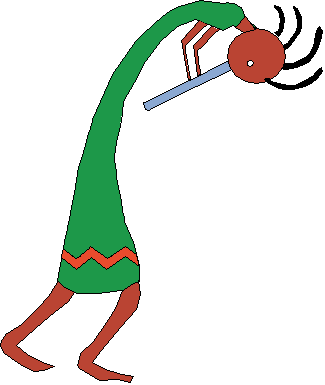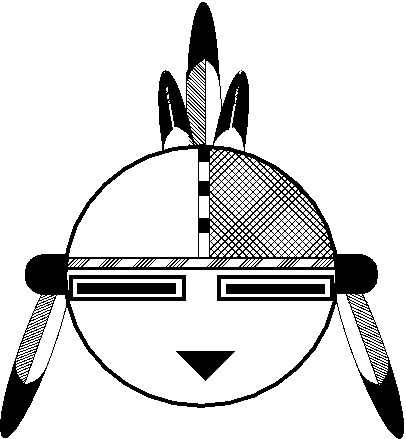



.
This document was originally prepared, in a slightly different format, for some friends and
colleagues in 1994. It was intentionally written in an informal style, and aimed at a general, non-archaeologist/non-anthropologist audience. The purpose was to provide some understanding and
appreciation of the locale and history of the Native Peoples of Northeastern Arizona and the
surrounding region.
Following a recent return to the Four Corners and new experiences in that inspiring country, it
occurred to the author that the document still existed, somewhere, on disk, and that, with some
editing, it might be of interest to others on the Web. That copy was found, and a few revisions
were made.
The results are on the screen or printout before you.

The author first became interested in the history of the
American Southwest when he read Prehistoric
America during the later years of grade
school. The story of Clovis man and his stone points, and of the
various discoveries and work of local giants, like the Wetherills
and Gouldings, are still fresh in the memory, after many, many
years. The one shortcoming of the book was a lasting inaccurate
impression that every major archaeological discovery in the area
was made by a White, teenage boy. It was something of a surprise
when reading additional histories of the region, and visiting the
area, to realize that there were some adults involved in the
major archaeological discoveries in the Southwest.
I would like to thank some of my visitors/readers for
providing additional information on Prehistoric
America. Their help was greatly appreciated.
My copy of the book was no longer easily available, following our
most recent interstate move. Prehistoric
America is one of the Landmark
series of books, published by Random House. The author is Anne
Terry White, who is also known as the author of
Lost Worlds, an introduction to Archaeology.
For readers curious about the sources for this work, they include years of reading. This work is the product of a long interest in the Southwest, its archaeology, and inhabitants, as well as information acquired during trips to the area. A large number of books and photocopied articles from the author's personal library and from the public library were assembled in 1994 to check dates and the sequence of various events. The primary sources used in 1994 for this work are listed at the start of the Bibliography, in the "Suggested Reading List" section. An apology is given to the authors of many other books and articles that have been read through the years that are no longer available for citation. Additional material has come from personal conversations with residents of the Four Corners area.

To any readers having questions or requesting specific
citations for statements contained herein, please recognize three
things:
Please read and enjoy the material on these pages.
.

.
 Proceed to The Illustrations and Images
Proceed to The Illustrations and Images
 Follow scholar Kokopelli to the Suggested
Reading List
Follow scholar Kokopelli to the Suggested
Reading List

 Return with Kokopelli to the hogan page, the
Table of Contents
Return with Kokopelli to the hogan page, the
Table of Contents
.
 Black Mesa Highlighted in Sunlight on a Stormy Day
Black Mesa Highlighted in Sunlight on a Stormy Day
.
 to
treeves@ionet.net
to
treeves@ionet.net
.

.
Contents, including illustrations, copyright © T. K. Reeves, 1997.
 on 3 May 1997.
on 3 May 1997.